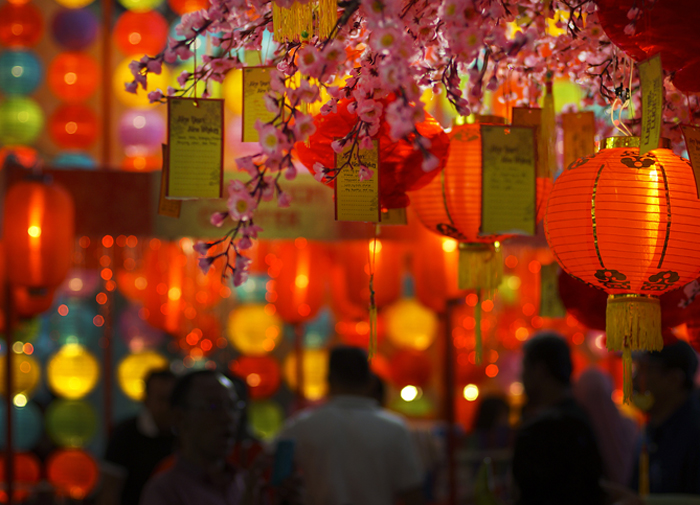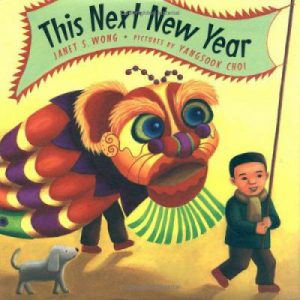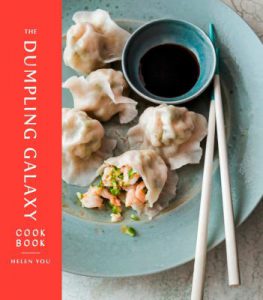Celebrate the Lunar New Year with family, food, and festivities
Posted on February 5, 2019 at 6:00 am

By Susan Goertz
Congratulations! You made it to 2019. I hope the year so far is treating you kindly.
If your resolutions are starting to fall by the wayside, or the glum weather is getting to you, don’t worry. There is another chance for a fresh start—the Lunar New Year!
As you know, the modern Gregorian, or western, calendar celebrates the start of a new year on January 1. The Lunar New Year celebration begins with the first new moon and ends 15 days later on the first full moon of the lunar calendar. Typically the holiday falls around January 21 to February 20 on western calendars.
This holiday is also known as Chinese Chunjie, Vietnamese Tet, Korean Seollal, Tibetan Losar, and Spring Festival and is celebrated in many Asian countries by nearly a quarter of the world’s population.
The origins of the festivities trace back about 3,500 years. While the exact origins of Lunar New Year are shrouded, we do know it dates back to the Shang Dynasty (circa 1600–1060 BCE) in China.
The legend of Lunar New Year focuses around a mythical beast known as Nian. A mountain dwelling monster, Nian wreaked havoc, descending to villages on each new year to swallow up crops, livestock, and sometimes children. This cycle continued until a wise elderly man appeared and taught the villagers how to keep the monster at bay. He imparted that Nian is easily scared by the color red and loud noises.
Many traditional customs are still practiced today, such as displaying red lanterns, wearing red clothing, and setting off fireworks, focusing around Nian and the wise man’s advice. A lovely modern retelling can be found in Andrea Wang’s The Nian Monster.
Although Lunar New Year traditions continue to evolve, there are many consistent themes. One of the biggest traditions of Lunar New Year is time with family.
Lunar New Year marks the largest annual human travel and migration day in the world. Over 200 million people of Chinese origin travel to reunite with their families. For some families, this is the only time of year they can be together. Usually New Year’s Eve and New Year’s Day are reserved for family celebrations, including religious ceremonies honoring ancestors. New Year’s Eve dinner is known as the “reunion dinner” for this reason.
A great way to learn about Lunar New Year traditions is to attend a local festival. The Spokane Chinese Association has just the event for you. On February 9 from 2 to 5pm, they will be having a free celebration, open to the public, at the Southside Community Center (3151 E 27th Ave). At the celebration, you can enjoy a Chinese musical performance, folk dancing, an arts and crafts exhibit, games for kids, traditional tasty treats to sample, and magic show, and a traditional Lion Dance.
As with any holiday, every family adapts traditions to make the celebration their own. A few children’s picture books share traditions and how they are adapted. This Next New Year by Janet Wong is a great example of this. Wong uses a child’s perspective to examine how people from countries all over the world celebrate, making the traditions fit their family. Dumpling Dreams: How Joyce Chen Brought the Dumpling from Beijing to Cambridge, by Carrie Clickard, tells the story of how a Chinese immigrant helped popularize her native cuisine in the U.S. through her “Ravioli-Peking style” dumplings. Some great books to introduce kids to Lunar New Year customs include Bringing in the New Year by Grace Lin, D is for Dragon Dance by Ying Chang Compestine, and My First Chinese New Year by Karen Katz.
It is no surprise that food is a big part of Lunar New Year celebrations. Traditional dishes are loaded with symbolic meaning. Some dishes emphasize long noodles to encourage longevity. Dumplings and spring rolls symbolize prosperity and wealth. Steamed fish is a common new year dish for abundance and making wishes because the word “fish” in Mandarin, which is the official state language in China, sounds like the word for “surplus.” Oranges and tangerines are popular because in Mandarin they sound like the word “success.”
If you would like to expand your Asian recipe repertoire, the library has plenty of drool-worthy cookbooks for you to check out. The Dumpling Galaxy Cookbook, by Helen You and Max Falkowitz, can help anyone master the delicate dumpling. A Chinese Street Food Odyssey, by Helen Tse and Lise Tse, has endless rice and noodle recipes to explore. Revolutionary Chinese Cookbook: Recipes from Hunan Province, by Fuchsia Dunlop, is a fascinating travel guide and cookbook all in one. And there are so many more!
If you are wondering where to find some of the more exotic ingredients, don’t worry because Spokane has some fantastic Asian markets to explore. The first one I braved in Spokane is the Best Asian Market (2020 E Sprague Ave), formerly the Bay Market, just a few blocks west of Northwest Seed and Pet. They were wonderful about helping me find everything I needed (like sticky rice) and some things I didn’t know existed (like jackfruit, dragon fruit, durian, etc.). On February 16 at 11am, they will be having their own Lunar New Year Celebration, including a dragon dance.
My favorite market in Spokane Valley is the Lieng & Phane Oriental Market (13124 E Sprague Ave) near Planet Fitness, east of McDonald Ave. They have given me more recipe tips than I can count. Their ceramics selection is also delightful. Anyone need cherry blossom rice bowls?
Would you like to explore Lunar New Year without leaving the comfort of your home? Hoopla has eBooks with recipes and children’s tales (Helpful tip: You’ll need to log in to hoopla in order for the following book links to work). Daughter of Heaven, by Leslie Li, is a particularly delectable memoir with family recipes. Li shares her own experience navigating her Chinese history with her American reality, as well as her grandmother’s (Nai-Nai’s) authentic recipes.
There is a great assortment of children’s books on hoopla as well, like Goldy Luck and the Three Pandas, by Natasha Yim, The Animals of Chinese New Year, by Jen Sookfung Lee, and Chinese Myths and Legends, by Shelley Fu.
For curious grownups, hoopla has Great Courses series, covering topics such as The Qin and the First Emperor of China and China and the Opium Wars. Hoopla even has albums like The Legendary Chinese New Year Hits to set the mood.
I wish you all Gong Xi Fa Cai (Mandarin), Gung Hay Fat Choy (Cantonese), and Happy Lunar New Year! May the Year of the Pig bring you all joy, prosperity, and longevity.

Tags: Chinese Chunjie, Chinese New Year, cookbooks, cooking, dragon dance, family, hoopla, kids, kids books, Korean Seollal, Lunar New Year, new year, Nian, parents, picture books, reading, Spring Festival, Tibetan Losar, tradition, Vietnamese Tet


